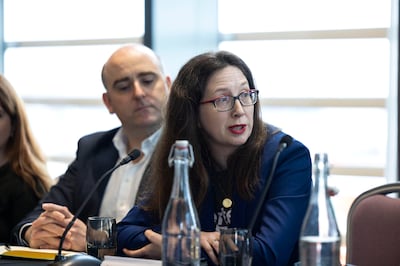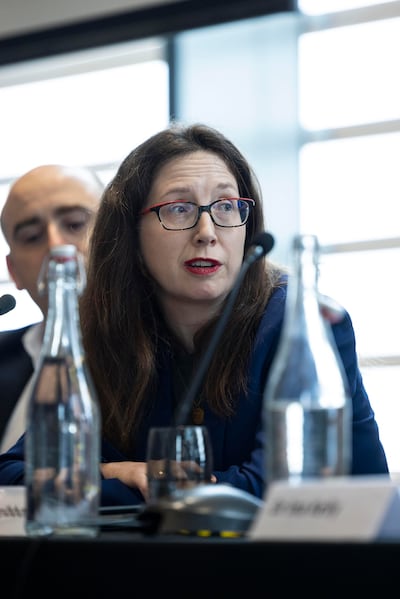As she recalls qualifying in the year 2000, Dr Sarah Fitzgibbon reckons she would have more than a little put out to think the male doctors graduating alongside her might earn on average a third more than their female colleagues over their careers, but even recent figures from the Central Statistics Office suggest that will be the case.
It was 2017, when out of work for a spell through illness, she says, before she gave the thought of gender inequality in the medical profession much thought and 2018 when she decided to try to do something about it.
A speculative tweet helped form the initial 100-strong membership of Women in Medicine in Ireland Network (WiMIN). Now, the number is around the 750 mark and the group has sought to raise awareness about some basic issues that persist around the profession. The results of an Irish Medical Organisation survey of 1,615 doctors presented at a conference on gender equality held recently in Dublin provided stark evidence of just how much work remains to be done in the area, although Dr Fitzgibbon says the findings are reflected in the day-to-day experiences of members of her organisation.

The research, in which 70 per cent of participants were women, suggested many see gender-based issues as impacting significantly upon their careers. This is despite almost half, 47 per cent, of clinically active doctors being female.
READ MORE
While issues such as childcare were clearly a challenge for substantial numbers of both men and women – and more than half of each said they had been the victim of bullying in the workplace – the differences were striking when it came to issue such as gender-based or sexual harassment. In the first instance, 53.6 of women and 12.4 per cent of men reported having been targeted, while, in the second, the respective figures were 39.8 per cent and 13.8 per cent.
One of the speakers at the conference, a consultant in emergency medicine, Dr Paddy Hillery, pointed to the number of women who said they had experience of these issues in the last two years – 27.9 per cent and 17.1 per cent respectively – as particularly shocking, but Dr Fitzgibbon says it is very much in line with what she hears from the group’s membership.
“I think any organisation that’s dealing with gender and equity, either in Ireland or worldwide, would be very familiar with these types of figures. None of these are shocking really for those of us who look at careers or professions through a gendered lens.
A major theme of the conference was the need for the Health Service Executive to use on-site childcare to help address its much-publicised staffing crisis. However, Dr Fitzgibbon feels the culture in medicine on this front is rooted firmly in the past. “Medicine was always going to be a real kingpin of the patriarchy given the environment where medical education started.
“Female doctors were only first qualified in Ireland around 100 years ago, compared to 400 or 500 years ago for men, and the way the training is structured, we often describe it now as being designed for 1950s men with wives. It’s perfectly fine if you can be out all hours of the day or night, you don’t have any responsibilities at home and you have somebody laundering your shirts and shining your shoes for you. But none of us have that now, neither men nor women.”

Networking around the job has a similar feel to it, something WiMIN has sought to address through more informal get-togethers and conferences where there is childcare and an understanding the kids might even crash the meetings on occasions. “In the past, a lot of this would have been maybe golf-related or rugby-related. Now, women love to golf, women like to go to rugby matches, but they don’t always have the opportunity to go off and play 18 holes on a Wednesday, when their male colleagues are doing it.”
At an institutional level, she says, there is progress being made and she points to RCSI, where both the president and vice-president are currently women, as a great example of an organisation reflecting on its attitude to gender-issues and taking action to implement improvements.
Some of the changes have, on the face of it, been small, like having more pictures of women on the walls, but all have been significant.
Asked if she thinks there is a danger the IMO could be presenting a similar set of finding in 20 years’ time, she says she can’t rule it out and that ensuring it doesn’t happen is one for us all to worry about, with the challenge extending beyond the question of how the next generation of female doctors is treated.
Properly acknowledging the importance of the work done caring for family members would be great, she says, but paying childcare professionals “appropriately and adequately, and giving them the respect that they deserve,” would be a step in the right direction, she suggests.
Ultimately, she says, we need to get to the point where “we’re all in it together” and everybody is recognised for the contribution they are making. “Then we can all go golfing and that would be great.”













